
A cryogenic valve is essential for controlling extremely cold liquid gases, ensuring safety by preventing leaks. These valves are commonly used with substances like LNG or liquid nitrogen. While globe valves are popular for precise flow control, ball valves are ideal when you need to stop flow quickly. Butterfly valves also play a crucial role in regulating flow efficiently. Cryogenic valves are built tough with special features such as long bonnets and durable materials to withstand harsh conditions. Choosing the right cryogenic valve, whether it’s a butterfly valve, ball valve, electric valve, or pneumatic valve, is vital for optimal system performance and longevity.
Cryogenic Valves Overview
What Is a Cryogenic Valve
A cryogenic valve works well in very cold places. It can handle temperatures below -196°C (-321°F). These valves help control the flow of liquefied gases like nitrogen, oxygen, hydrogen, and LNG. They are different from regular valves because they use strong materials. These materials do not break or get damaged by cold or heat changes. Cryogenic valves also have special seals to stop leaks. This is very important when working with cryogenic fluids. Many industries need these valves to keep things safe and running smoothly. Regular valves would not work in these tough conditions. That is why cryogenic valves are needed for liquid nitrogen and other cold substances.
Key Features
Cryogenic valves have special features to keep them safe and reliable in cold places. The table below shows the most important features:
| Essential Feature | Description |
|---|---|
| Operating Temperature Range | Works at very low temperatures, from -40°F to below -320°F. |
| Extended Bonnet/Body Extensions | Keeps the stem packing and parts away from the cold fluid. This stops freezing. |
| Tight Shut-off Capability | Stops leaks of cryogenic fluids. |
| Material Requirements | Uses special alloys to stay strong and last longer in the cold. |
| Prevention of Trapped Fluid Cavities | Stops fluid from getting trapped and causing pressure problems. |
| Electrical Continuity | Stops static electricity from building up in flammable places. |
| Compliance with Standards | Follows rules like MSS SP-134, BS 6364, ASME 16.34, and ISO 21011. |
| Testing Protocols | Gets tested for strength, leaks, and how well it works in the cold. |
| Stem Design and Orientation | Has a one-piece stem and is set up for good operation. |
Note: These features help cryogenic valves keep systems safe and working, even in very cold places.
Common Materials
Manufacturers pick materials for cryogenic valves that stay strong in the cold. These materials do not get weak or break easily. The table below lists the most common materials and their good points:
| Material | Advantages |
|---|---|
| Stainless Steel | Stays strong in the cold; does not break or freeze. |
| Brass | Lasts a long time in the cold; used in valve parts. |
| Bronze | Works well in cryogenic conditions. |
| High-performance Plastics | Stops leaks and keeps a tight seal in the cold. |
Cryogenic valves often use special seals and packing to stop leaks. They may have long bonnets or stem extensions to keep moving parts away from the cold. These designs help the valves work well in systems with nitrogen and other liquefied gases.
Types of Cryogenic Valves
Ball Valves
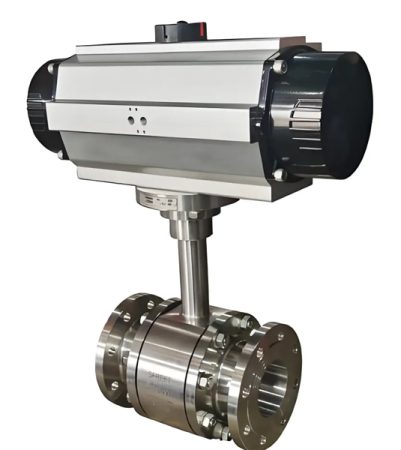
Cryogenic ball valves are a main type of cryogenic valve. They use a round ball to control very cold fluids. This ball can stop or let fluids pass through. The design lets you shut off flow quickly. It also keeps a tight seal, even in freezing cold. These valves work at temperatures as low as -273°C (-459°F). Special materials help the valve stay strong and not leak in cold places.
Some important features are:
- Two parts move on their own to change pressure for opening and closing.
- The valve is built to stop frostbite and keep working in cold.
- It works well when pressure or temperature changes a lot.
Liquid nitrogen is often used with these ball valves. Many industries use them, like oil and gas, chemical plants, power plants, water treatment, and paper making. Food factories, mining, planes, and cars also use them. Science labs need these valves for safety and control.
Tip: Ball valves shut off fast, so they are good for emergencies or when you need to stop flow quickly.
Globe Valves
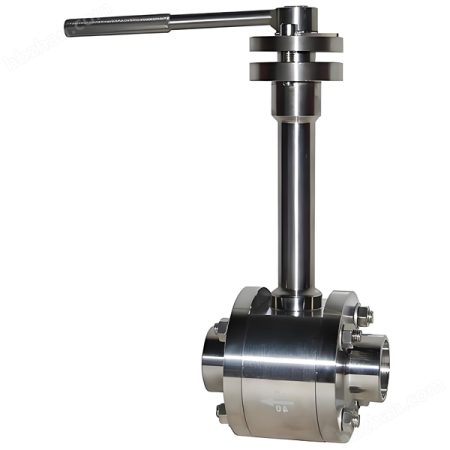
Cryogenic globe valves help control flow very well. They also seal tightly. Inside, there is a disc called an obturator. It turns 90 degrees to open or close the valve. This makes sure the seal is tight and lasts a long time. Makers use strong metals like stainless steel, Inconel, and Monel. These metals do not crack or break in the cold.
A special part of globe valves is the long stem or bonnet. This keeps some parts warm so they do not freeze or stick. These valves are usually closed to stop leaks. When pressure goes up, the valve opens to let fluid move.
Industries like chemical plants, LNG, CNG, and oil and gas use globe valves for cold liquids. These valves work well and last long in tough cold places. But they are not the best choice if you need a lot of flow.
| Feature | Benefit |
|---|---|
| Extended stem/bonnet | Stops valve parts from freezing |
| Durable materials | Stops leaks and cracks |
| Reliable sealing | Keeps cryogenic fluids safe |
Gate Valves
Cryogenic gate valves let fluids move with little resistance. The inside is straight, so fluids flow easily. The valve is small and strong, which makes it easy to make and put in. The channel is the same on both sides, so flow can go either way.
Some good things about these valves are:
- They seal well with metal parts and PTFE packing, so they last long.
- The long bonnet keeps heat from escaping and keeps parts warm.
- The wedge-shaped gate drops pressure only a little when open, so flow stays good.
- Stellite Trim helps stop wear when fluids are very cold.
Gate valves work well below -40°C. People pick them for bigger sizes instead of ball valves because they cost less and work better. The metal seals do not wear out as fast as Teflon ones. But these valves are harder and more expensive to use than butterfly valves, especially when they are big. They are not good for remote control or if you need to open and close them a lot.
Note: Gate valves do not cause water hammer as much, so they are safer for some cryogenic systems.
Butterfly Valves
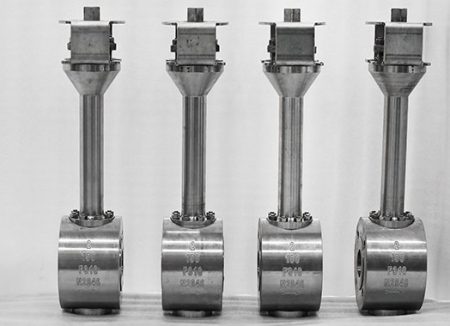
Cryogenic butterfly valves help control very cold liquids. They have a round disc inside the pipe. The disc turns to start or stop the flow. It only needs a small turn to open or close. This makes it quick and easy to use. The valve often has a soft seat for a tight seal. This helps stop leaks and keeps ice from forming.
Engineers pick these valves for many reasons. They handle cold and stress without breaking. The seat stays tight, and the valve stays strong in freezing weather. The stem seal also stops leaks, which keeps things safe.
You can find these valves in many places, like:
- LNG terminals for moving and storing gas
- Storage and delivery of cold gases like nitrogen and oxygen
- Factories for medicine, food, and computer chips
- Labs that do cold experiments
These valves move fluids like LNG and liquid nitrogen. Their design deals with problems like shaking, noise, and bubbles. This makes them good for stopping or letting fluids flow. People like these valves because they work well and keep systems safe.
Note: Cryogenic butterfly valves are light and small. This makes them easy to put in and saves space in busy pipe systems.
Check Valves
Check valves keep cryogenic systems safe by letting fluid go one way. They stop fluid from going backward, which can hurt equipment or cause danger. These valves do not need power to work. The fluid’s pressure opens or closes the valve.
Check valves in cold systems are helpful because they:
- Stop fluid from going the wrong way and keep it clean
- Lower the chance of accidents or broken equipment
- Help meet safety rules for the industry
- Make sure fluid moves smoothly in one direction
Makers use strong metals like stainless steel, brass, or titanium. These metals stay strong and sealed in the cold. Putting them in right and checking them often keeps them working well. By stopping backflow, check valves keep the system clean and running right.
Tip: Always check and take care of check valves. This helps them keep cryogenic systems safe from sudden pressure changes.
Relief Valves

Cryogenic relief valves keep systems safe from too much pressure. If the pressure gets too high, the valve opens by itself. It lets out extra fluid to lower the pressure. When things are normal again, the valve closes. This stops the system from breaking and keeps people safe.
A relief valve has a disc with a spring. The spring holds the disc shut until the pressure is too high. Then the fluid pushes the disc open. When the pressure drops, the spring shuts the valve again. The valve must be made from materials that work in the cold.
Rules like API 520, 521, 526, 527, and ASME BPVC tell how to pick and test relief valves. These rules make sure the valves work safely and follow the law.
Safety Alert: Always use the right rules when picking and putting in relief valves. This keeps cryogenic systems safe from too much pressure and follows the law.
Solenoid Valves
Solenoid valves are important in cryogenic systems that need quick and exact control. These valves have an electric coil that moves a plunger up or down. When the coil gets power, it makes a magnetic field. This field lifts the plunger and lets liquid or gas flow. When the power is off, the plunger drops and stops the flow. This setup gives fast and steady control over cryogenic fluids.
Engineers pick solenoid valves for many reasons. These valves react fast, so they work well when flow must change quickly. Their small size fits into tight spots, like labs or busy pipes. Many solenoid valves have stainless steel bodies and special seals such as Teflon or Viton. These materials do not crack and keep a tight seal in the cold.
The table below shows the main good and bad points of solenoid valves in cryogenic systems:
| Key Benefits of Solenoid Valves in Cryogenic Applications | Limitations in Cryogenic Use |
|---|---|
| Precise flow control for accurate dosing and flow rates | Material brittleness at low temperatures can cause cracks or breaks |
| Fast response time for rapid adjustments | Seal hardening and loss of elasticity may lead to leaks |
| Compact size for space-constrained installations | Thermal contraction can cause misalignment and stress |
| Durable construction with stainless steel and special seals | Electrical insulation issues and increased coil resistance |
| Low energy consumption for efficiency | Lubricants may solidify, increasing friction |
| Low maintenance due to few moving parts | Ice formation can block moving parts |
| Versatility for various fluids and gases | Thermal shock may cause fatigue |
| Safety features like automatic shutoff on power failure | High costs and strict regulations in cryogenic environments |
| Automation capability for remote or programmed control | N/A |
| Cost-effectiveness compared to other valve types | N/A |
Solenoid valves have many good points for cryogenic use. They give exact control, so operators can set flow and dosing just right. Their quick action helps when changes must happen fast. The small size means they fit where space is tight. These valves use strong materials like austenitic stainless steel to handle the cold. Special seals like Teflon and Viton stop leaks. Automation lets people control them from far away or by computer.
But solenoid valves also have some problems in the cold. Regular valve materials can get brittle and crack. Seals may get hard and lose their stretch, which can cause leaks. Cold can make parts shrink and not line up right. Electrical parts may not work well, and the coil can get too much resistance. Lubricants can get thick or hard, making it tough for parts to move. Ice can block moving parts. Fast temperature changes can make materials tired and weak.
Operators should pick solenoid valves made for cryogenic use. They need to check if the materials and seals match the system’s cold and fluid. Checking and fixing valves often helps stop leaks or stuck parts. If picked and cared for the right way, solenoid valves give safe, automatic control for many cryogenic systems.
Tip: Always use solenoid valves made for cryogenic service. This keeps the system safe and helps the valve last longer in the cold.
Cryogenic Valve Applications
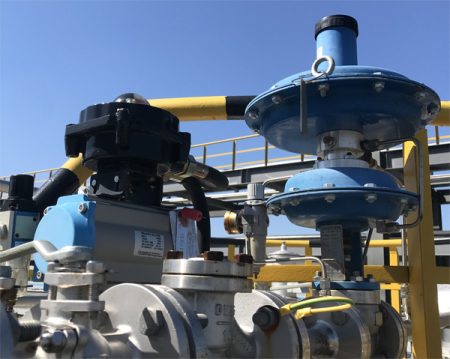
Oil and Gas
The oil and gas industry uses more cryogenic valves than any other field. These valves help move very cold liquids like LNG, liquid nitrogen, and liquid oxygen. Workers pick globe, gate, ball, or butterfly valves for different jobs. Each valve type helps control flow or shut off fluids. More LNG terminals and pipelines mean more need for strong cryogenic valves.
Some important things for oil and gas valves are:
- Valves must seal tight in the cold to stop leaks.
- Makers use special metals so valves do not get brittle.
- Long necks and insulation keep parts from freezing.
- Valves must not rust when touching harsh fluids.
- Each valve gets tested for leaks and pressure at all temperatures.
Valves work best when put in right and checked often. The table below shows how the industry uses these valves and why:
| Industry | Role of Cryogenic Valves/Actuators | Adoption Drivers and Trends |
|---|---|---|
| Oil & Gas | Largest end-user; valves needed for LNG exploration, production, transport | Expansion of LNG terminals, storage, pipelines; need for robust, reliable valves; integration of smart actuators for safety and efficiency. |
In 2024, oil and gas make up 42.8% of the cryogenic valve market. More people want LNG and cleaner energy, so better cryogenic valves are needed.
LNG and Storage
LNG storage and moving systems need special cryogenic valves to work below -150°C. These valves are key for handling LNG, which must stay at -162°C to stay liquid. Cryogenic valves stop leaks, control flow and pressure, and keep things safe during storage and delivery.
Workers use ball, gate, globe, and check valves for different jobs. Some valves turn flow on or off, some control flow, and some stop backflow. Picking and caring for the right valve keeps LNG moving safely. Cryogenic valves in LNG systems stop vapor from forming, which could cause explosions or harm the environment.
Main features of these valves are:
- Tight seals keep leaks away and keep things safe.
- Strong materials stop valves from breaking in the cold.
- Valves can control flow and pressure very well.
- Each valve is tested for leaks, pressure, and strength.
These valves are needed to keep LNG safe from start to finish. They help move liquefied natural gas safely all over the world.
Chemical Processing
Chemical plants use cryogenic valves to handle very cold and dangerous fluids like liquid nitrogen and LNG. These valves help control flow and pressure, which keeps the process safe and working well. Workers pick butterfly, globe, or ball valves for each job.
Cryogenic valves in chemical plants have many good points:
- They work well in the cold, so they can handle liquefied gases.
- Tight seals stop leaks and keep dangerous fluids inside.
- They control flow to keep fluids pure and mixed right.
- Valves can close off pipe sections for repairs without stopping everything.
- They can shut down fast in emergencies to stop accidents.
- Strong materials help valves last and not break from cold.
- Long bonnets and special shapes stop freezing and leaks.
- They work well even when used a lot, so plants run smoothly.
Makers use stainless steel or special metals to keep valves strong and bendy in the cold. Long bonnets keep moving parts away from the cold fluid, so they do not freeze. These things make cryogenic valves very important for safe and good chemical plant work.
Gas Liquefaction
Gas liquefaction plants make gases like natural gas into liquids. They do this at very cold temperatures. These plants need cryogenic valves that work in the cold and under high pressure. The right valves help keep the process safe and running well.
In the past, many plants used ball and gate valves. These older valves had trouble in very cold places. Their seals could get smaller or break, which caused leaks. They were also big, heavy, and needed lots of care. Now, engineers like to use triple offset valves, or TOVs, for gas liquefaction.
TOVs have many good points:
- They have metal seats that close tightly, even when it is very cold.
- Their design stops rubbing, so they last longer and need less fixing.
- TOVs are lighter and smaller than old valves, so they are easier to put in.
- They help cut down on leaks because they seal well and turn with just a quarter turn.
- Many TOVs meet tough fire and emission rules, which helps keep things safe.
The table below lists some important needs for cryogenic valves in gas liquefaction:
| Requirement Category | Specific Details |
|---|---|
| Body Material | Austenitic 316 stainless steel is strong in the cold |
| Leakage Testing Standards | API 598 at least; BS 6364 uses helium at -270°F to -325°F |
| Leakage Rate Limits | For liquefaction: max 150 cm3/min/inch; even lower at terminals and on ships |
| Fire-Safe Specifications | BS 6755, API 607, API 6FA |
| Body and Parts Testing | Random valves and parts get X-ray and dye checks |
| Certifications for LNG Carriers | Bureau Veritas, DNV, ABS approvals |
| Safety Considerations | Must stop LNG vapor leaks and prevent sudden phase changes |
Gas liquefaction needs valves that pass hard leak tests and fire safety rules. Plants often use austenitic stainless steel for valve bodies because it stays strong in the cold. Helium tests at very low temperatures check for leaks. Some valves also get X-ray and dye tests to find hidden cracks.
Safety is very important. If LNG vapor leaks, it can catch fire, so valves must seal well. The industry faces new problems as more people want LNG. Companies must keep making good valves, even as they make more.
Note: The LNG industry is starting to use TOVs more. This is because they are safer, last longer, and cost less for gas liquefaction plants.
Selecting Cryogenic Valves

Material Selection
Picking the right materials for cryogenic valves is very important. Engineers need to know how materials act in very cold places. Some metals get brittle and might crack. Others stay strong and tough. Stainless steel, like 304 and 316, is a top pick. It does not rust and stays strong in the cold. Nickel-based alloys such as Inconel and Monel work well too. Titanium, copper, and aluminum alloys are also good for cryogenic use.
When choosing materials, engineers look at many things:
- How tough the material is in the cold and if it can avoid breaking.
- How much the material shrinks when it gets cold, which can change how parts fit together.
- If the material can resist rust, especially with fluids like liquid oxygen.
- If the material can be welded well, which helps make strong valve joints.
- If the material works safely with the cryogenic fluid.
- If the right sealing materials, like PTFE or graphite, are used to stop leaks.
Valve design must also think about shrinking from the cold. Long bonnets help keep seals tight and moving parts working. Using industry rules makes sure the materials are safe and work well.
Tip: Always pick valve materials that match the cryogenic fluid and system needs. This helps the valve last a long time.
Manual vs Automatic
People must choose between manual and automatic cryogenic valves. Manual valves use handwheels or levers. These are simple and cheap. They are easy to fix and work well when you do not need to change things often. They are good if you can reach the valve easily.
Automatic valves use actuators that run on electricity, air, or oil. These valves can be controlled from far away and react fast. They are best for systems that need quick shutoff or lots of changes. Automatic valves make things safer because people do not need to go near dangerous spots.
| Valve Type | Best For | Key Benefits |
|---|---|---|
| Manual | Simple, low-traffic systems | Low cost, easy maintenance |
| Automatic | Complex, high-traffic systems | Fast response, remote control |
Note: For important cryogenic jobs, automatic valves are often safer and work better.
Safety and Standards
Safety is very important when picking cryogenic valves. International rules and certificates help make sure valves are made right. These rules check the design, materials, and how well the valve works. Some of the most important rules are:
- ASME B16.34 for how to design and build valves.
- ISO 9001 for making sure factories have good quality.
- ISO 15848 for checking if valves leak.
- ASTM rules for checking if materials work in the cold.
- The National Board checks for good service and testing.
- CN and TR CU are for following rules in different places.
| Standard / Certification | Description |
|---|---|
| ISO 9001 | Makes sure cryogenic valves are made well. |
| ISO 15848 | Checks if valves leak and if they work well. |
| ASME B16.34 | Gives rules for safe valve design. |
| ASTM Standards | Checks if materials are good for cold. |
| The National Board | Certifies good service and testing. |
| CN, TR CU, KAG | Local certificates for following rules everywhere. |
Following these rules helps stop accidents and makes valves last longer. It also helps companies follow the law. When picking a cryogenic valve, always check for the right certificates and safety features.
Matching Valve to Application
The type of valve depends on what the system needs. Ball valves stop flow fast, which is good in emergencies. Globe valves help control flow very carefully. Gate valves let a lot of fluid move with little push. Butterfly valves fit in small spaces and work well when there is not much room. Check valves stop fluid from going backward, which keeps machines safe. Relief valves open if pressure gets too high, so the system does not break.
Engineers also think about how the valve will be used. Manual valves are turned by hand and are good for simple jobs. Automatic valves use power to open and close. Solenoid valves are special because they react fast and can be controlled from far away. These valves are great for systems with high pressure and very cold fluids. They help control flow exactly, but engineers must check if the power and flow are right.
How the system works changes what valve is best. If the temperature changes a lot, the valve must handle parts getting bigger or smaller. The materials should not crack or lose their shape. The design must keep seals tight, even when it gets very cold.
Engineers follow rules to pick safe valves. Groups like API, ASME, and ISO make these rules. Some jobs, like food or medicine, need extra checks. Engineers look at these before choosing a valve.
Price and care also matter. Some valves cost more but last longer or need less fixing. Engineers try to find a valve that fits the job and is not too expensive.
In short, picking the right cryogenic valve means looking at the fluid, what the system needs, how it will be used, and safety rules. This careful work keeps systems safe, working well, and lasting a long time.
Tip: Always check what the system needs and make sure the valve fits every rule before you choose one.
Design Features
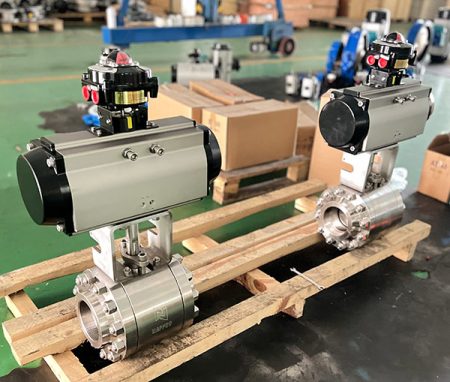
Extended Bonnet
Cryogenic valves often have an extended bonnet. This part helps protect the inside of the valve from very cold temperatures. The extended bonnet keeps the stuffing box and stem seal warmer, usually above 8°C. This stops them from freezing and keeps the packing soft. A tight seal is easier to keep this way. Operators get many benefits from this design:
- The extended bonnet makes it easy to add insulation. This helps save energy and keeps heat from escaping.
- It keeps the handle and stuffing box away from the cold. This helps protect workers from frostbite.
- The design stops ice from forming on the valve stem and packing. This lowers the chance of leaks or damage.
- Maintenance is easier because workers can change parts through the bonnet. They do not need to take off the whole valve body.
- The bonnet works well with thick insulation. Operators can adjust the packing gland without moving the insulation.
- The stem extension helps stop heat from leaking out. It also keeps the valve steady when temperatures change.
- The all-welded build and vacuum jacketed pipe spool lower installation costs. They also help protect the valve from rust.
- The extended bonnet design is strong, reliable, and lasts a long time in cold fluid systems.
Note: The extended bonnet goes through the cold box wall. This makes it easier to use and fix the valve in cold box setups.
Sealing Technology
Modern sealing technology is important for cryogenic valve safety. Engineers use new materials and smart designs to solve problems from cold and pressure changes. The table below shows some new ideas and how they help:
| Aspect | Details |
|---|---|
| Latest Advancements | New plastics, nanotechnology, FEA, and 3D printing for custom seals |
| Types of Seals | Spring-energized seals (metal springs in PTFE/PEEK), special elastomers, and composite seals |
| Challenges Addressed | Shrinking materials, less flexibility, chemical safety, and pressure changes |
| Impact on Reliability | Keeps sealing force, cuts leaks, lasts longer, and works the same every time |
| Key Features | Works in wide temperatures, resists chemicals, low leak rate, and strong |
| Industry Applications | Used in LNG transport, space, medical storage, and making industrial gases |
| Additional Notes | PTFE seals are safe with chemicals and cold, so they last longer |
These new ideas help valves keep a tight seal, even when it gets colder or the pressure changes. Spring-energized and composite seals can change shape as needed. This helps stop leaks and makes the valve last longer.
Maintenance
Good maintenance helps cryogenic valves work well for a long time. Operators follow steps to keep valves clean and working right:
- Drain all the fluid from the valve before cleaning.
- Use strong cleaners to get rid of grease and dirt.
- Clean with ultrasound, then blow out leftover stuff with high-pressure gas.
- Put clean valves in double plastic bags to keep them safe during transport.
Regular checks help find damage, wear, or leaks early. Cleaning gets rid of dirt, trash, or ice, especially on sealing parts. Moving parts should be oiled with products made for cold use. Change seals and gaskets when needed to stop leaks. Operators should warm up or cool down valves slowly. Using insulation helps stop heat from moving too fast.
Actuators also need to be checked often for problems. Maintenance teams should write down all checks, repairs, and part changes. Training workers on care and safety makes valves work better and follow rules.
Tip: Most cryogenic valve failures happen because of dirt buildup. Using dirt guards and doing regular maintenance can stop leaks and help valves last longer.
Knowing about cryogenic valve types and how they are used helps companies stay safe and work better. Picking the best valve means you must think about what it is made of, if it can be automatic, and if it meets the right rules. For new jobs, experts say to do these things:
- Look at how cold and what kind of place the valve will be in.
- Pick materials that are strong and do not rust.
- Make sure the valve follows rules like API 6D and passes impact tests.
- Think about how parts get bigger or smaller with temperature changes.
- Check that plastic or rubber parts can handle the cold.
- Use the maker’s tips for putting in and taking care of the valve.
- Remember that special materials and tests can cost more.
Getting help from experts makes sure cryogenic systems work well and stay safe.
FAQ
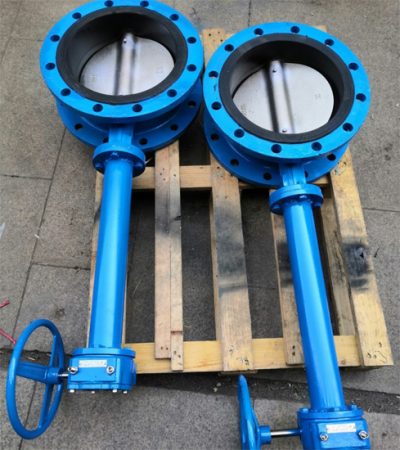
What makes a valve suitable for cryogenic service?
Cryogenic valves are made with strong materials and smart designs. These things help the valves work well in very cold places. Long bonnets and tight seals keep moving parts from freezing up.
How often should operators inspect cryogenic valves?
Operators need to check cryogenic valves on a regular schedule. Most experts say to look at them every three to six months. Checking often helps find leaks, worn parts, or ice before problems start.
Can cryogenic valves handle both gases and liquids?
Yes, cryogenic valves can control both cold gases and cold liquids. The type of valve and what it is made of must fit the fluid. Stainless steel and special seals are best for most cryogenic fluids.
Why do cryogenic valves have extended bonnets?
Extended bonnets keep the stem and packing warmer than the cold fluid. This stops freezing and helps the valve seal tightly. The handle is farther from the cold, so workers are safer.
What industries use cryogenic valves the most?
Oil and gas, LNG storage, chemical plants, and gas liquefaction plants use these valves a lot. Medical, food, and aerospace companies also use them to handle cold fluids safely.
How do operators prevent leaks in cryogenic valves?
Operators pick valves with good seals and the right materials. They clean and check the valves often to remove dirt and ice. Following the maker’s instructions keeps valves working and leak-free.
Are all cryogenic valves automated?
Not every cryogenic valve is automated. Some use handwheels for manual control. Automated valves use actuators for fast or remote use. The choice depends on what the system needs and how safe it must be.
